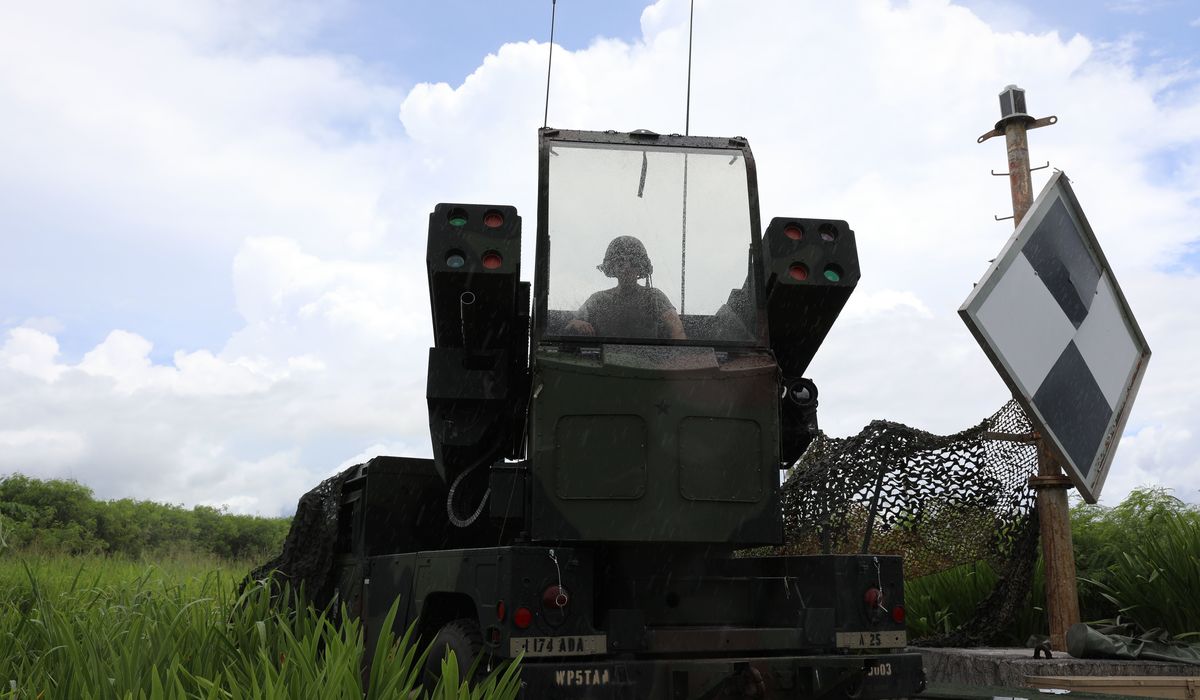
The Pentagon will invest heavily in military construction across the Pacific while updating existing facilities in Guam and Australia, officials said Monday, offering the first broad glimpses of the U.S. military‘s unfolding effort to redirect equipment and personnel to counter the growing threat posed by China.
Speaking to reporters Monday afternoon, defense officials laid out the general principles in the Biden administration‘s “global posture review,” or GPR, which represents a comprehensive reevaluation of U.S. military assets across the globe and a rough road map for where those assets should be stationed in the 21st century. The document itself is classified and Pentagon officials offered little detail on specific future moves.
But defense officials made clear that the GPR reinforces the overall strategic imperative that resources need to be moved from the Middle East and elsewhere toward the Pacific, where an increasingly aggressive China and its well-funded People’s Liberation Army pose a newfound threat to stability. That broad “pivot” toward China was a policy priority of former Presidents Barack Obama and Donald Trump and has been continued in many ways by President Biden.
But it’s a shift that has repeatedly been frustrated by the need to address immediate crises elsewhere, whether it was the Russians in Crimea, Iran and Libya in the Middle East, or Islamic State and other jihadists groups in Africa. Mr. Biden and Defense Secretary Lloyd Austin are likely to face similar competing priorities as they seek to execute the pivot.
“The priority region for the global posture review was the Indo-Pacific. The global posture review directs additional cooperation with allies and partners across the region to advance initiatives that contribute to regional stability and deter potential military aggression from China and threats from North Korea,” Mara Karlin, performing the duties of deputy under secretary of defense for policy, told reporters Monday afternoon at the Pentagon. “These initiatives include seeking greater regional access for military partnership activities, enhancing infrastructure in Australia and the Pacific islands, and planning rotational aircraft deployments in Australia,” a move Mr. Austin announced earlier this year.
Officials say many of the changes envisioned in the GPR are still being negotiated with U.S. allies, and the details will not be made public. The posture review itself, unusually, will also not be released.
Ms. Karlin said there are other specific plans in the works, all of which underscore the Pentagon‘s realization that it needs to have more assets in place in the Pacific to counter any potential military moves by Beijing, such as an invasion of Taiwan or other nearby islands.
“You’ll see ground forces training and increased logistics cooperation, and actually more broadly across the Indo-Pacific. You’ll see a range of infrastructure improvements, in Guam, the Commonwealth of the Northern Mariana Islands and Australia,” she said. “Those will include things, more broadly, like logistics facilities, fuel storage, munitions storage, air field upgrades.”
Rising tensions
U.S. defense officials stressed that the Biden administration still seeks to lead with diplomacy and views a military confrontation with China as a last resort. A key piece of the president’s diplomatic outreach is next month’s “Summit of Democracies,” a virtual forum of democratic nations aimed at pushing back against authoritarian regimes such as the Chinese Communist Party.
The U.S. invited Taiwan to the summit, infuriating Chinese leaders who say that Washington is actually ratcheting up tensions and increasing the chances of war.
“This year marks the 30th anniversary of the end of the Cold War. The U.S. hosting of the summit for democracy is a dangerous move to rekindle the Cold War mentality, to which the international community should be on high alert,” Chinese Foreign Ministry spokesperson Wang Wenbin told reporters on Monday. “We call on visionary people in all sectors to jointly reject anti-democratic and pseudo-democratic acts to safeguard international solidarity and cooperation and advance world peace and development.”
While many of the specific details of future U.S. military investments in Asia remain classified, officials stressed that regular military exercises with Pacific allies remain a central component of America’s strategy. Officials specifically cited October naval movements in the Pacific alongside Japanese and British vessels. Such drills, commonly known as “freedom of navigation” exercises, are explicitly designed to push back against Chinese claims of sovereignty over portions of the strategically vital South China Sea.
“This is the sort of activity we want to focus on in the Indo-Pacific,” a senior defense official told reporters on a conference call earlier Monday.
In Europe, officials offered little detail on future U.S. military presence on the continent, other than to say that countering Russia remains the overarching goal.
For the Pentagon, the increased focus on China will come at a cost. Officials made clear that the investments and movement of troops and resources to the Pacific by definition will mean reducing America’s footprint elsewhere.
“Direction from the GPR will strengthen the department’s focus on China by reducing posture requirements in other theaters to enable improved war-fighting, readiness and increased activities in the Pacific,” the senior defense official said.
The U.S. military exit from Afghanistan, first laid out by Mr. Trump and continued by Mr. Biden, is the prime example of America’s seeking to clear the decks in the Middle East in order to focus on the Pacific. The Biden administration also has reduced the U.S. military role in Iraq, though several thousand troops remain in that country to advise Iraqi troops in the fight against the Islamic State terrorist group.
Biden administration officials argue that they have spent a great deal of its first year in power undoing damage done by Mr. Trump, including what they say were military decisions made with little broad coordination across the government that directly affected European security.
Mr. Trump also clashed with Asian allies such as South Korea and Japan over his demands that they pay more for the U.S. troops and bases stationed in their countries to help defend them from threats.
“We sought to reestablish a strategy-informed, coherent, posture decision-making process and restore healthy civil-military relations in the department,” the official said. “On a number of occasions in the previous administration, posture decisions were made or announced without a deliberate process and without due consideration of global trade-offs, risk to strategy, interagency coordination, and impact to allies and partners.”
The defense official specifically cited the Trump-era announcement of a major reshuffling of U.S. military forces in Europe, which centered on moving thousands of American troops out of Germany to other locations. That decision, seen by many as an expression of Mr. Trump‘s anger with German Chancellor Angela Merkel and with Germany’s low defense spending totals, was ultimately reversed by Mr. Biden.








